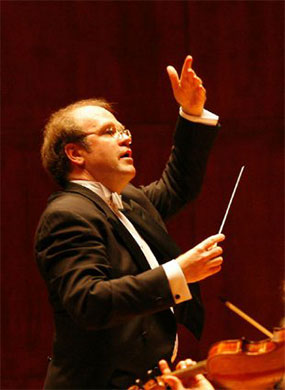by Daniel Hathaway

Conducting a reduced ensemble while seated on a piano bench, Labadie began his program with a rarity, Henri-Joseph Rigel’s Symphony No. 4 in c. A German who settled in Paris and wrote in the Italian style, Rigel was associated with the Concert Spirituel and became one of the founders of the Paris Conservatoire.
Thursday evening’s work, one of his 14 symphonies, embodies some Sturm und Drang drama in its outer movements and briefly offers the respite of a Siciliano in the second. Labadie brought out its sudden bursts of energy and wild contrasts of dynamics to fine effect in a reading of appealing transparency. Vibrato was used only judiciously and only for expressive effect.
Isabelle Faust, Labadie, and a larger orchestra collaborated in a performance of Mendelssohn’s always-ingratiating Violin Concerto remarkable for its wide dynamic range and sense of understatement. Unlike more Romantic interpreters, Faust barely raised her voice above the orchestra, while playing with commanding technique and control. Her tone was consistently lovely amid some real bursts of passion. The presto tempo of the final movement nearly achieved the status of the composer’s scherzos.
The audience was obviously taken by the performance, calling Faust back for several bows and eventually the oddest encore played at Severance Hall in living memory: György Kurtág’s brief and stark Doloroso.

That approach can lead to a performance that’s merely a series of interesting episodes, but while Labadie was lovingly examining the micro-aspects of Mozart’s score, the macro-view was always in full sight as well.
The Cleveland Orchestra was wonderfully responsive to his take on the symphony, playing with a historically sensitive version of its characteristic mix of warmth, incisiveness, and textural clarity. A woman in my row retook her seat after the applause, savoring what had just happened. “We have a wonderful orchestra,” she said. You bet we do.
Published on ClevelandClassical.com February 21, 2018.
Click here for a printable copy of this article



